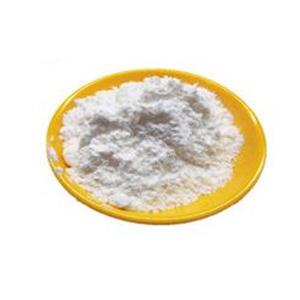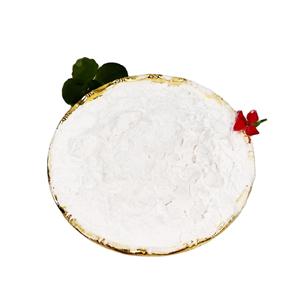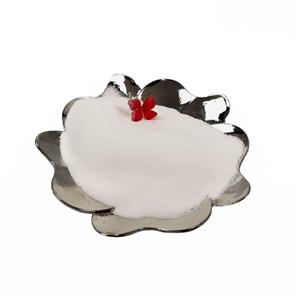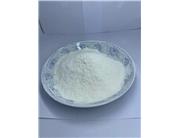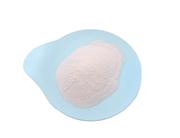| Description | GW 501516 is a PPARδ agonist with an EC50 of 1.1 nM. |
|---|
| Related Catalog | Signaling Pathways >> Autophagy >> Autophagy Signaling Pathways >> Cell Cycle/DNA Damage >> PPAR Research Areas >> Metabolic Disease |
|---|
| Target | PPARδ:1.1 nM (EC50) |
|---|
| In Vitro | GW 501516 is shown to be the most potent and selective PPARα agonists known with an EC50 of 1.1 nM against PPARα and 1000-fold selectivity over the other human subtypes, PPARα and-γ[1]. GW 501516 exerts anti-inflammatory effects in mouse cultured proximal tubular (mProx) cells. GW 501516 inhibits palmitate- and TNFα-induced increases in MCP-1 mRNA expression in a dose-dependent manner[3]. |
|---|
| In Vivo | GW 501516 causes impaired bone formation, leading to decreased BMD and deterioration of bone properties in OVX rats[2]. GW 501516 attenuates interstitial inflammation and proximal tubular cell damage in a protein-overload mouse nephropathy model[3]. GW 501516 treatment enhances running endurance and the proportion of succinate dehydrogenase (SDH)-positive muscle fibres in both trained and untrained mice[4]. |
|---|
| Solvent | In Vitro: 10 mM in DMSO In Vivo: 1.GW 501516 is prepared in vehicle control (saline containing 0.5% DMSO)[5]. |
|---|
| Solubility | 1 mM2.2051 mL11.0254 mL22.0507 mL5 mM0.4410 mL2.2051 mL4.4101 mL10 mM0.2205 mL1.1025 mL2.2051 mL |
|---|
| Cell Assay | GW 501516 is dissolved in DMSO. Cells are starved by incubation in 0.2% FCS DMEM for 9 h, then pre-incubated with GW 501516, at a final concentration of 2.5 and 5 µM, or 0.05% DMSO as control for 3 hours, followed by stimulation with 150 µM palmitate bound to 8.0% BSA for 12 h[3]. |
|---|
| Animal Admin | Rats: Female Sprague Dawley rats, 12 weeks of age, are allocated to a sham-operated group and 3 OVX groups; high-dose GW 501516 (OVX-GW5), low-dose GW 501516 (OVX-GW1), and a control group (OVX-CTR), respectively. Animals receive GW 501516 or vehicle (methylcellulose) daily for 4 months by gavage. Bone mineral density (BMD) is assessed by dual x-ray absorptiometry at the femur, spine, and whole body[2]. Mice: Mice are randomly allocated to different groups and receive therapeutic diet and treatment. The GW 501516-containing rodent diet is made by evenly adding GW 501516 to the control diet to a final concentration of 0.04% w/w. In the control diet, 10% of the total calories are from fat (5.5% from soybean oil and 4.5% from lard)[3]. |
|---|
| Storage | Powder-20°C3 years 4°C2 yearsIn solvent-80°C6 months -20°C1 month |
|---|
| Shipping | Room temperature in continental US; may vary elsewhere |
|---|
| SMILES | OC(COC1=CC=C(C=C1C)SCC2=C(N=C(S2)C3=CC=C(C=C3)C(F)(F)F)C)=O |
|---|
| References | [1]. Wei ZL, et al. A short and efficient synthesis of the pharmacological research tool GW501516 for the peroxisome proliferator-activated receptor delta. J Org Chem. 2003 Nov 14;68(23):9116-8. [2]. Mosti MP, et al. Effects of the peroxisome proliferator-activated receptor (PPAR)-δ agonist GW 501516 on bone and muscle in ovariectomized rats. Endocrinology. 2014 Jun;155(6):2178-89. [3]. Yang X, et al. GW 501516, a PPARδ agonist, ameliorates tubulointerstitial inflammation in proteinuric kidney disease via inhibition of TAK1-NFκB pathway in mice. PLoS One. 2011;6(9):e25271. [4]. Chen W, et al. A metabolomic study of the PPARδ agonist GW 501516 for enhancing running endurance in Kunming mice. Sci Rep. 2015 May 6;5:9884. [5]. Ji Y, et al. PPARβ/δ Agonist GW501516 Inhibits Tumorigenicity of Undifferentiated Nasopharyngeal Carcinoma in C666-1 Cells by Promoting Apoptosis. Front Pharmacol. 2018 Jun 28;9:648. |
|---|
| Related Molecules | GW9662 | Tretinoin | Elafibranor | Troglitazone | T0070907 | Pemafibrate | CDDO-Im | Wy-14643 | GW0742 | GW1929 | FH535 | Icariin | Daidzein | Fisetin | GSK0660 |
|---|

 China
China
